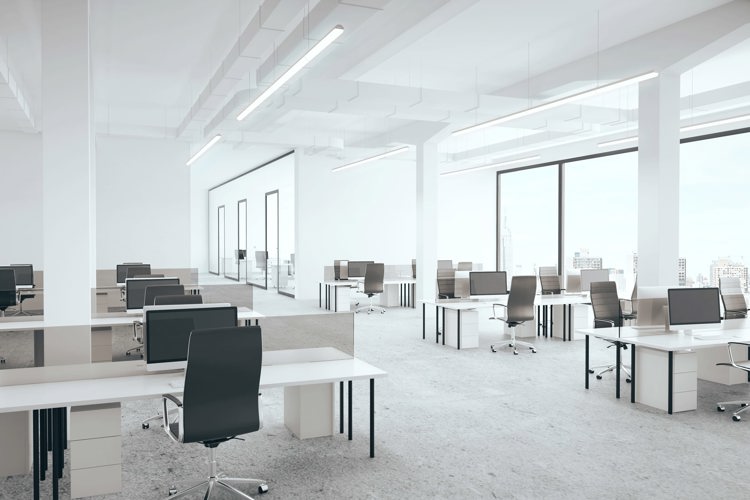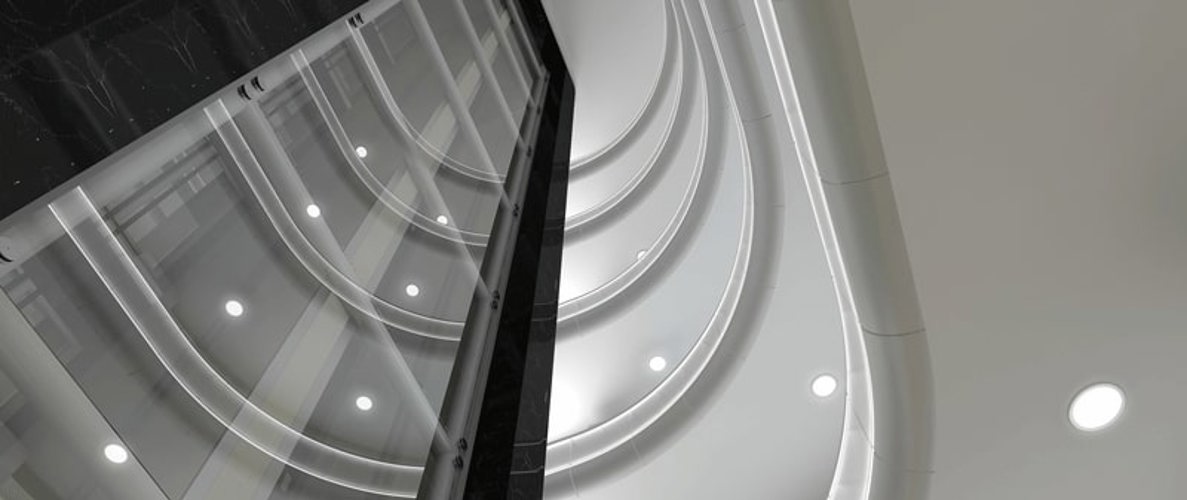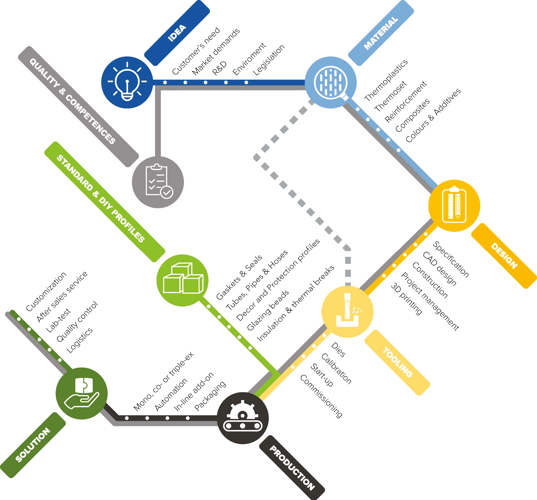
Joakim Häggblom
Sales DirectorJoakim is the Sales Director of Primo Finland and Primo Sweden.
Speaks: English, Finnish, Swedish.
Primo provides market leading manufacturers of lighting solutions with cover and insulation profiles, designed for optimum protection and easy installation.
Developing efficient and economical solutions and following market trends is what Primo is all about. In the lighting industry, this is done in a close and open relationship with Primo's partners and customers.
Also, continuous investments in automatisation, such as inline processing on the extrusion line, packing machines and quality measurement devices, are essential in that process. Through automatisation, Primo secures competitiveness and products that fulfil all quality requirements.

Thermoplastics components offer a wide range of advantages such as insulating ability, heat and corrosion resistance and design flexibility.
We are a world leader in combining metals (copper & aluminum) with plastic used in applications such as halogen-free profiles for lighting tracks and electrical connections.
Furthermore, we are a leading expert in optical properties of polymer materials with a dedicated business area and production facility, including polycarbonate (PC) and acrylic (PMMA).
New solutions, applications and raw materials are continuously developed. We have to work closely together with our customers to help them reach their goals, but also to secure our competence proactively. We want to be part of the customer's development as early as possible and act in a "consultant role" from an extrusion standpoint. This way, the profile is optimised for production and, priority number one, meets all customer requirements," says Group Commercial Director, Jaakko Salo, Primo.
For decades, Primo has produced busbars for customers in the lighting industry. The development started together with Nokia, known as Nordic Aluminium today.
The major benefit of using extruded polymer profiles for lighting are insulation. Furthermore, the limited weight of plastics allows for lighter structure designs. Also, polymers such as acrylics (PMMA), have superior optical qualities that are better than glass, while polycarbonate (PC) has superior impact resistance and flammability values.
Another benefit is that it is possible to enhance raw material features such as UV-resistance, light diffusion, haze, chemical resistance – and even to combine different materials into a single profile that can substitute several components and fulfil multiple purposes.


.. and any lighting article that needs a competitive polymer solution!
The various types of plastics all have different structures that determine their properties, like rigid or soft, flexible, and so on. These characteristics, and their combinations, are limited only by the imagination.
Reshaping products and igniting innovation in polymer extrusion.
Engaged customers, from designers to engineers, fuel meaningful discussions. Our shared material language combines their needs with our expertise, refining plastic profiles for optimum results.
Decades of cross-industry polymer expertise, makes Primo your dedicated partner providing specialized units for medical tubing, subsea cables, and automotive gaskets..
Clients arrive with finished drawings or sketches, opening doors for collaborative improvement. Thanks to the right polymer, tool, and our material knowledge, we enhance profiles and their functions. With accumulated international experience, we're adept at suggesting superior polymers and faster processes.
The right material is a crucial factor for the properties of your profile and final product. Plastic's adaptability creates intricate shapes, offering flexibility, strength, and diverse applications. Primo leads with superior plastic solutions, embracing sustainability and recyclability.
Versatility: Plastics serve countless roles, from insulation to decoration.
Durability: Resistant to impact, weather, and chemicals, plastics offer reliability.
Efficiency: Low friction suits moving parts, ensuring longevity.
Eco-Friendly: Energy-efficient and recyclable, plastics champion sustainability.
Elevate your products and accelerate time to market with expertise. Our comprehensive approach encompasses tooling, profile design, material expertise, and streamlined development. Harnessing these elements transforms your vision into superior products, while expediting your journey to market success.
For us, every new concept is a new challenge that involves all stakeholders. But our journey doesn't stop there. Every plastic product has the potential for improvement, expansion or material innovation.
Your customers may require additional documentation to meet evolving regulations.
We see the endpoint as an exploration of uncharted territory, a springboard for a new journey ahead.
Computer control and monitoring ensures that all information is updated during production. Our traceability system is an integrated part of our ERP system, Oracle. The quality module that guarantees total control and documentation. All Primo products are fully documented and data sheets can be supplied on request.

Our people are dedicated to finding solutions to every challenge. That spirit makes for some great stories.
View all news & articles

Joakim is the Sales Director of Primo Finland and Primo Sweden.
Speaks: English, Finnish, Swedish.